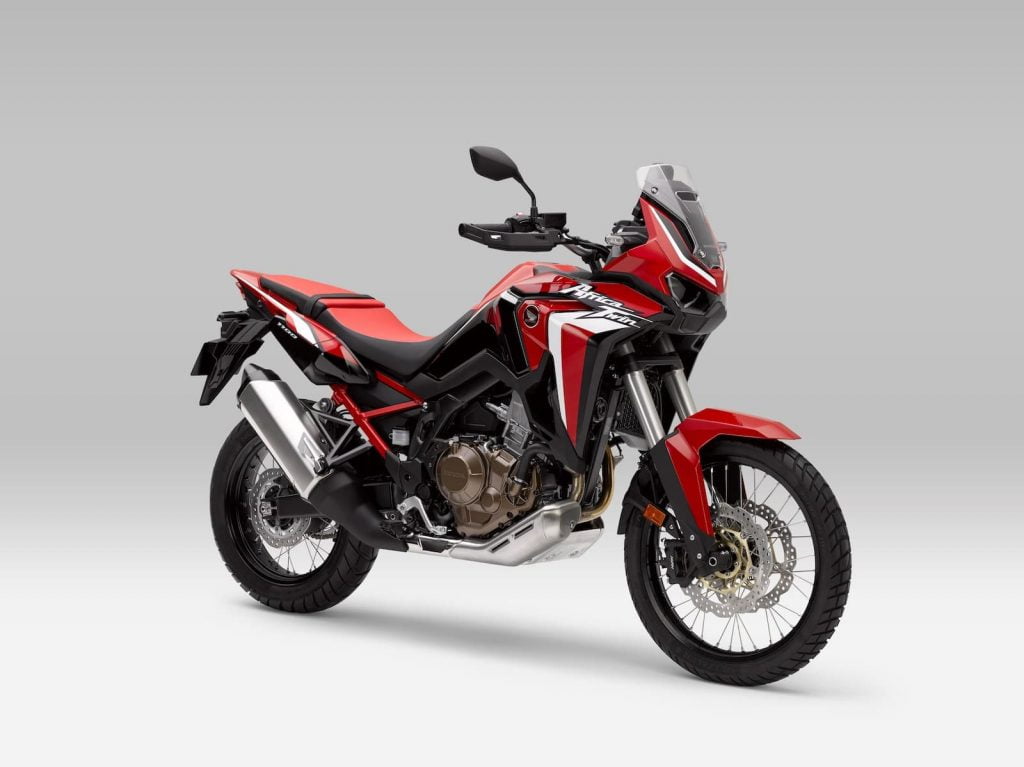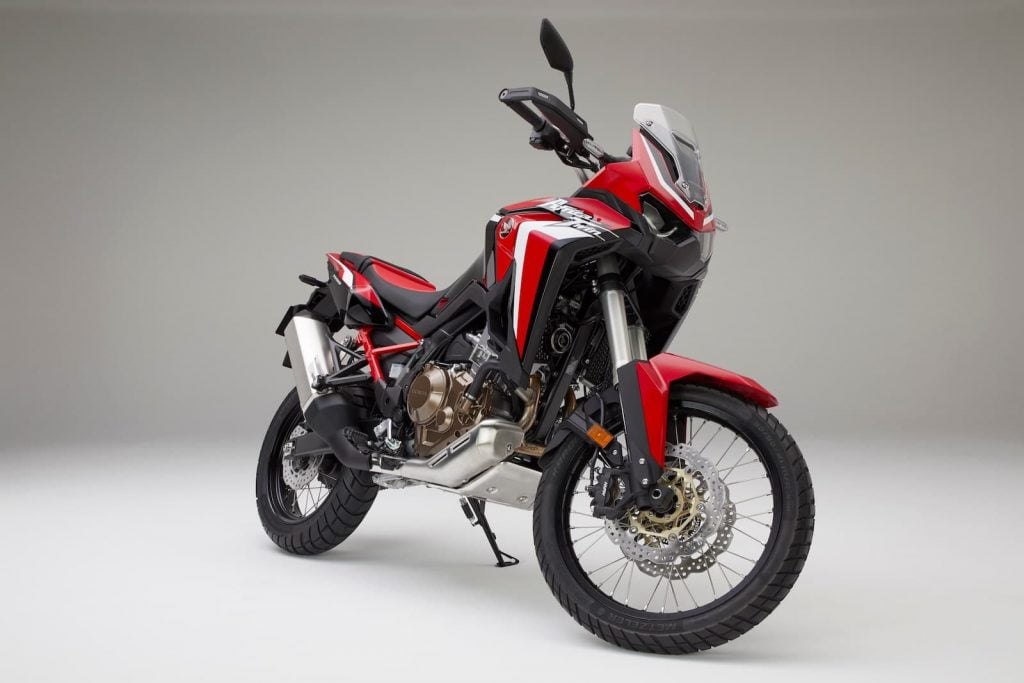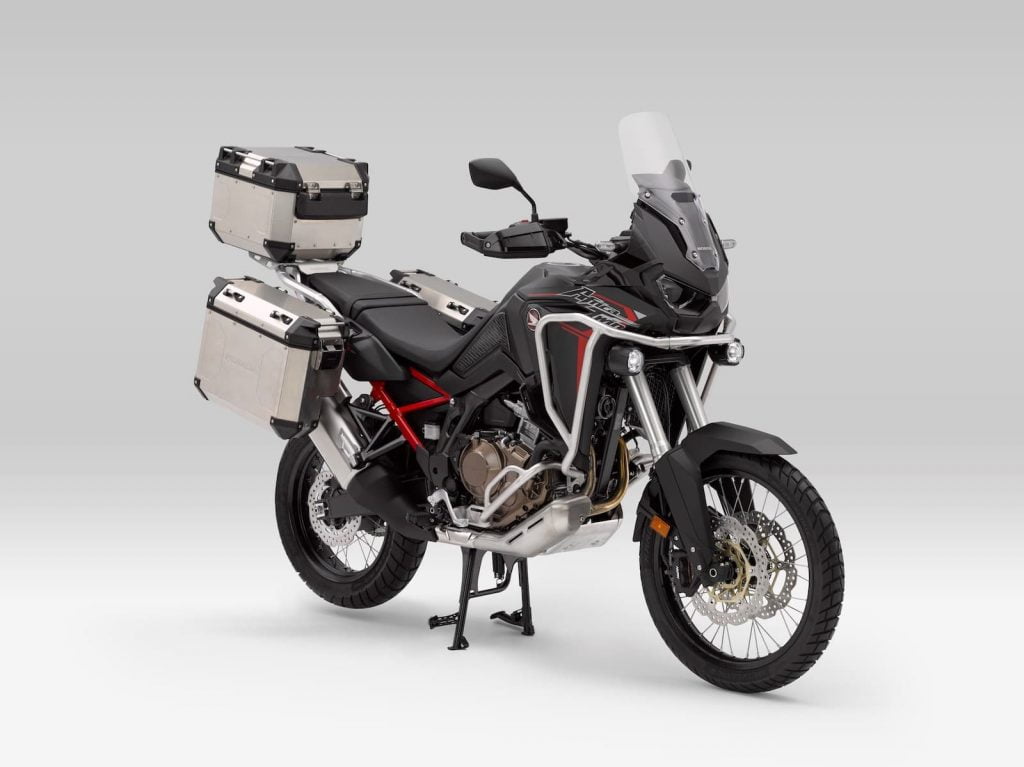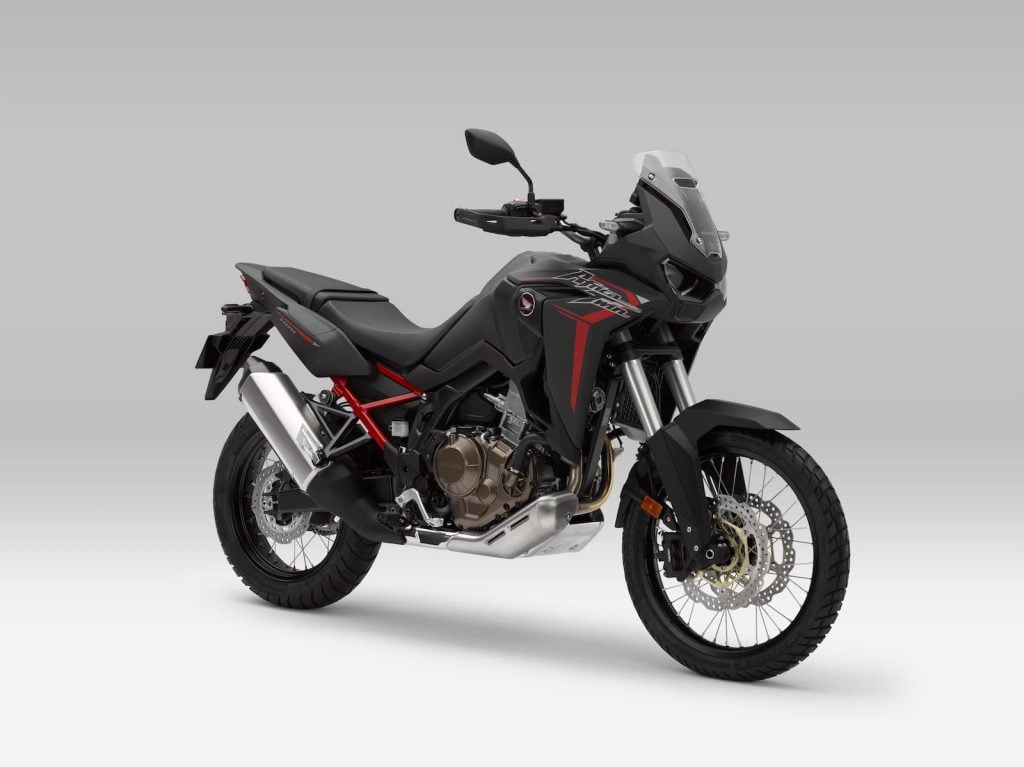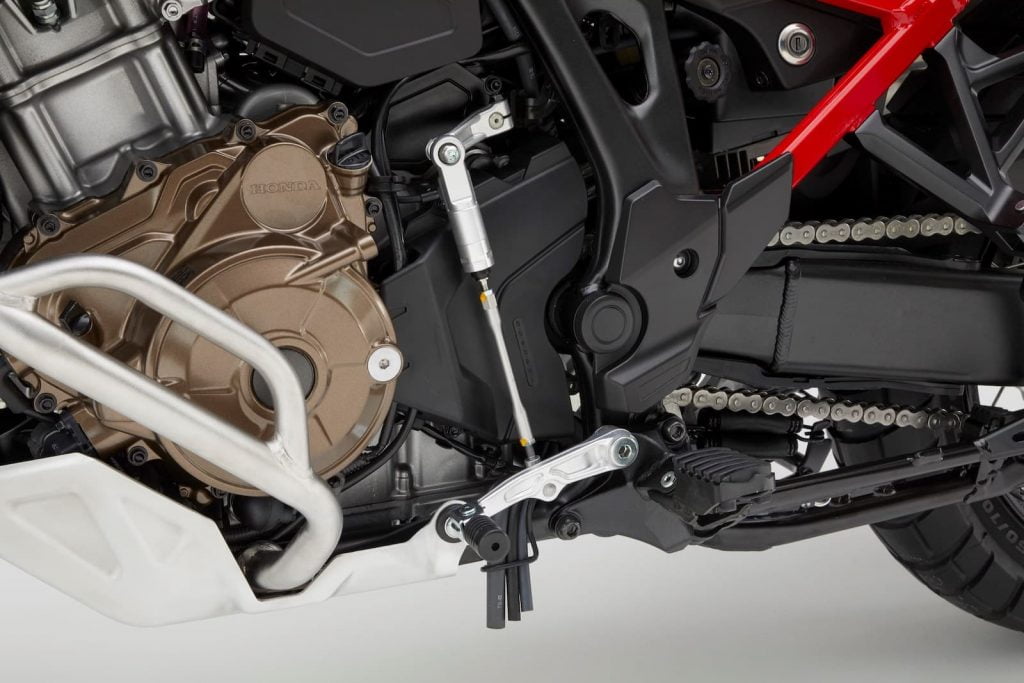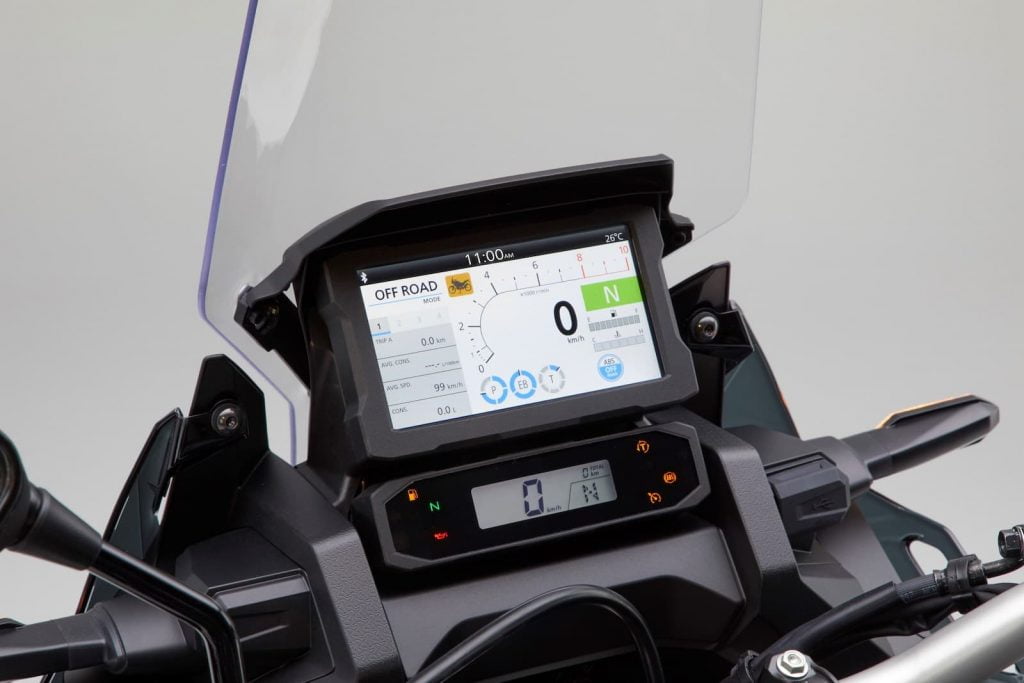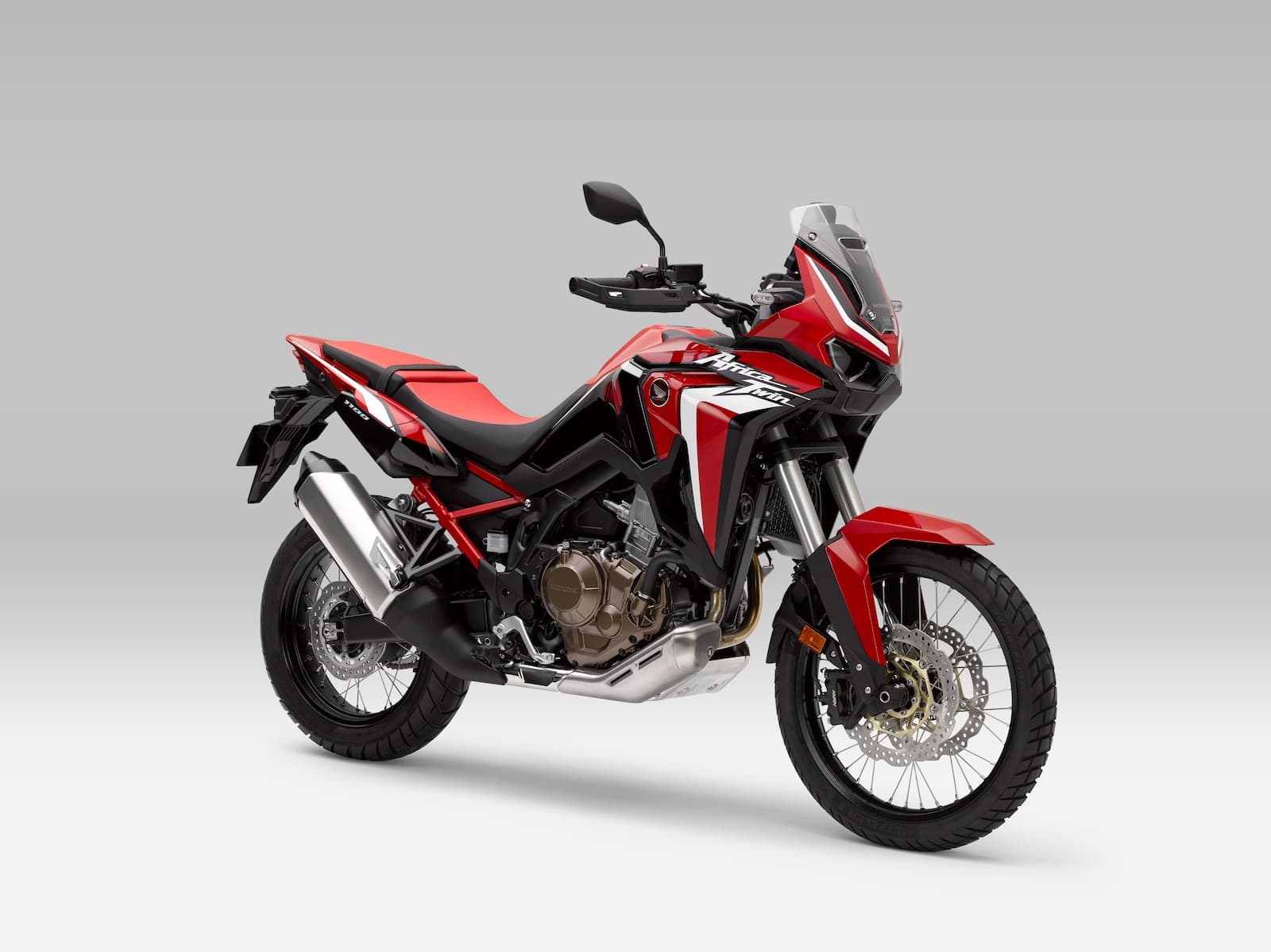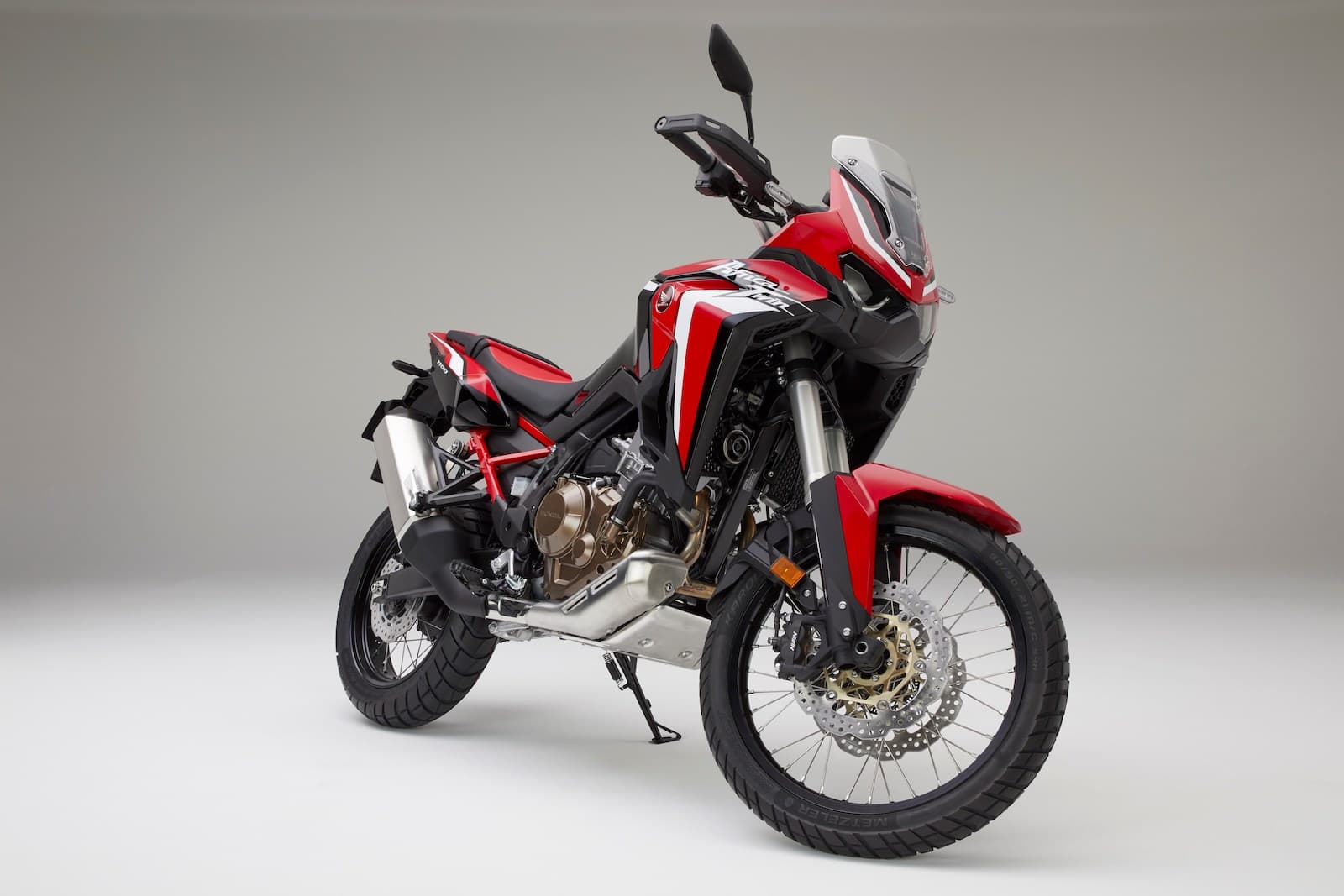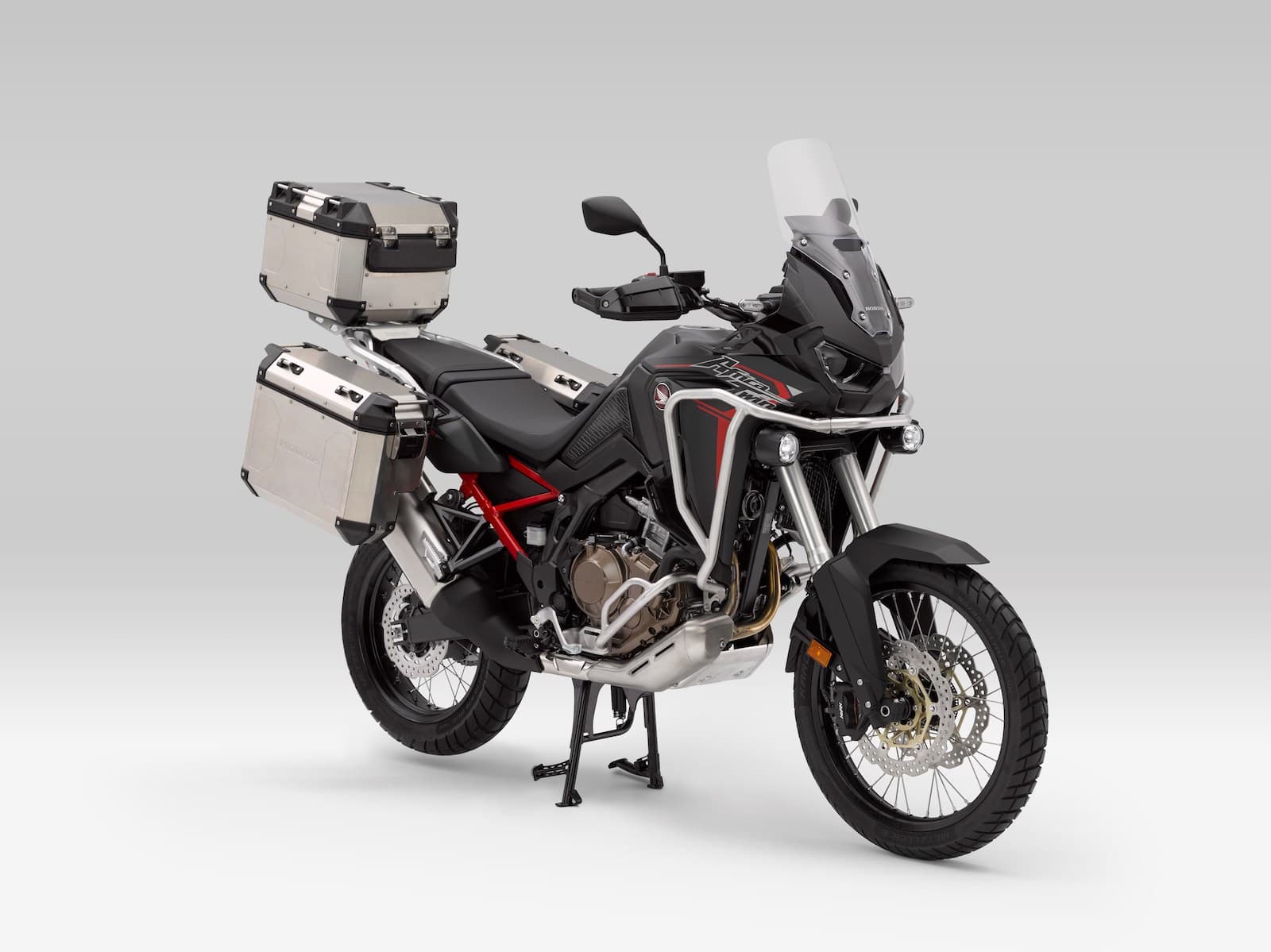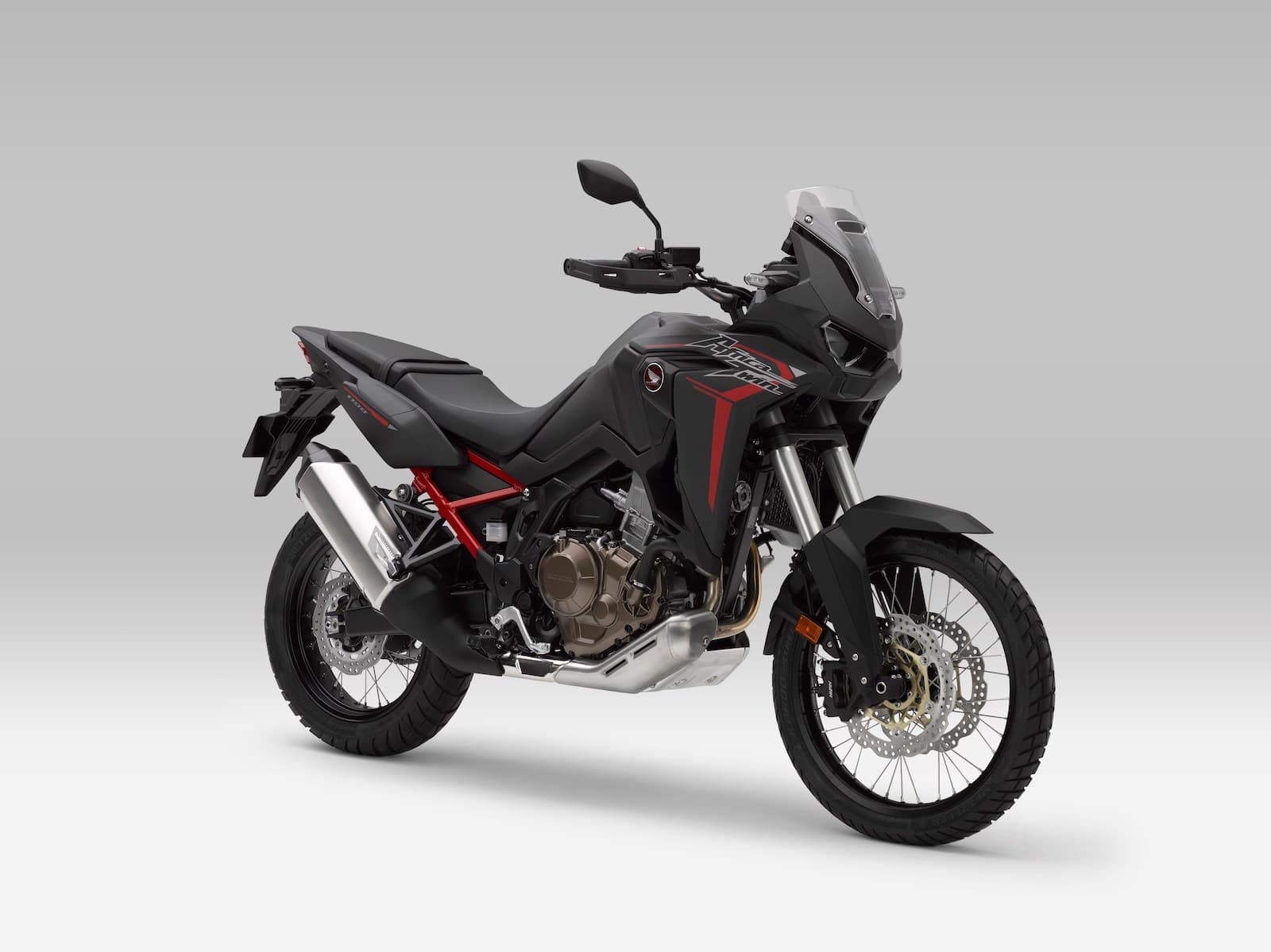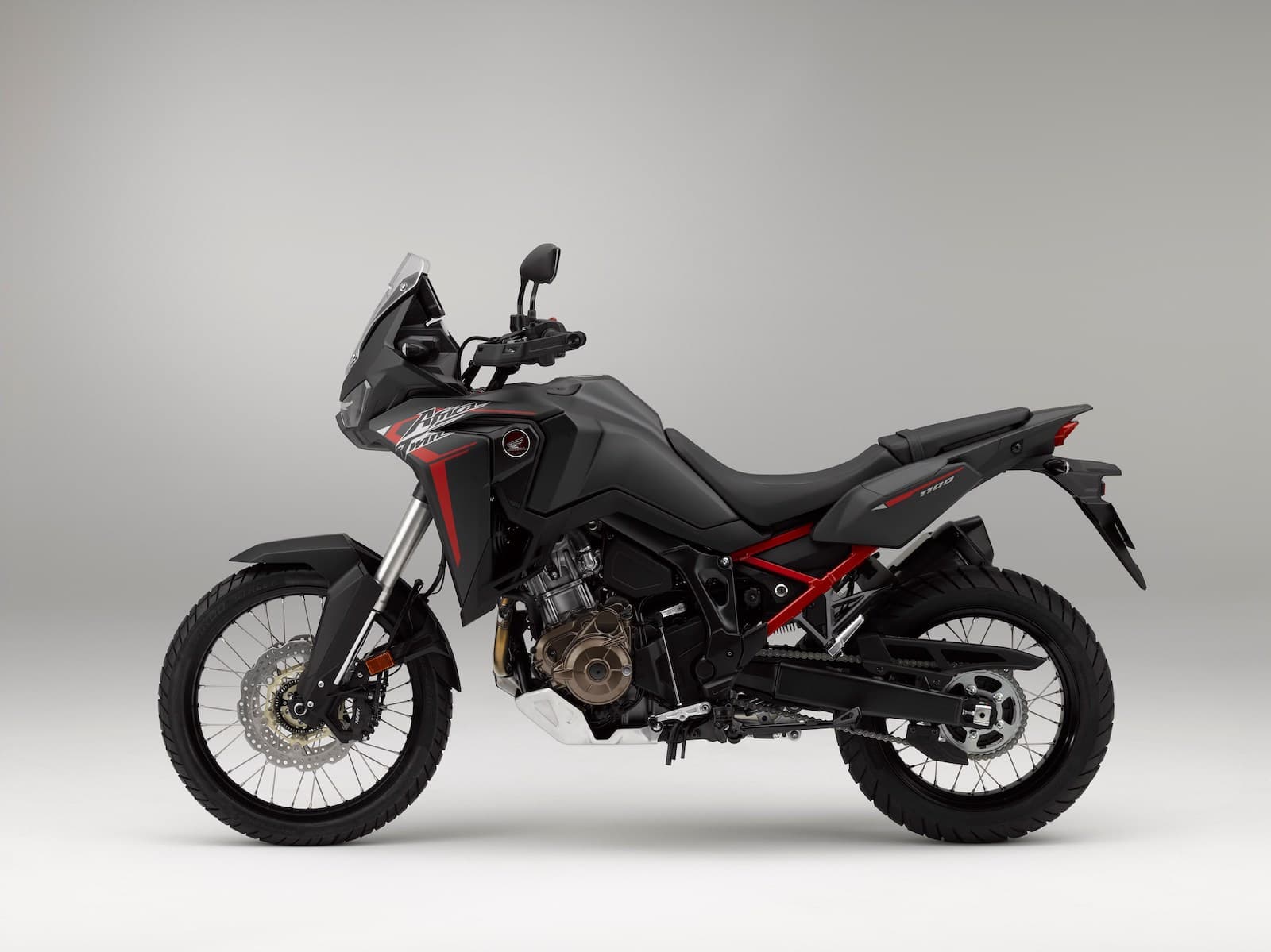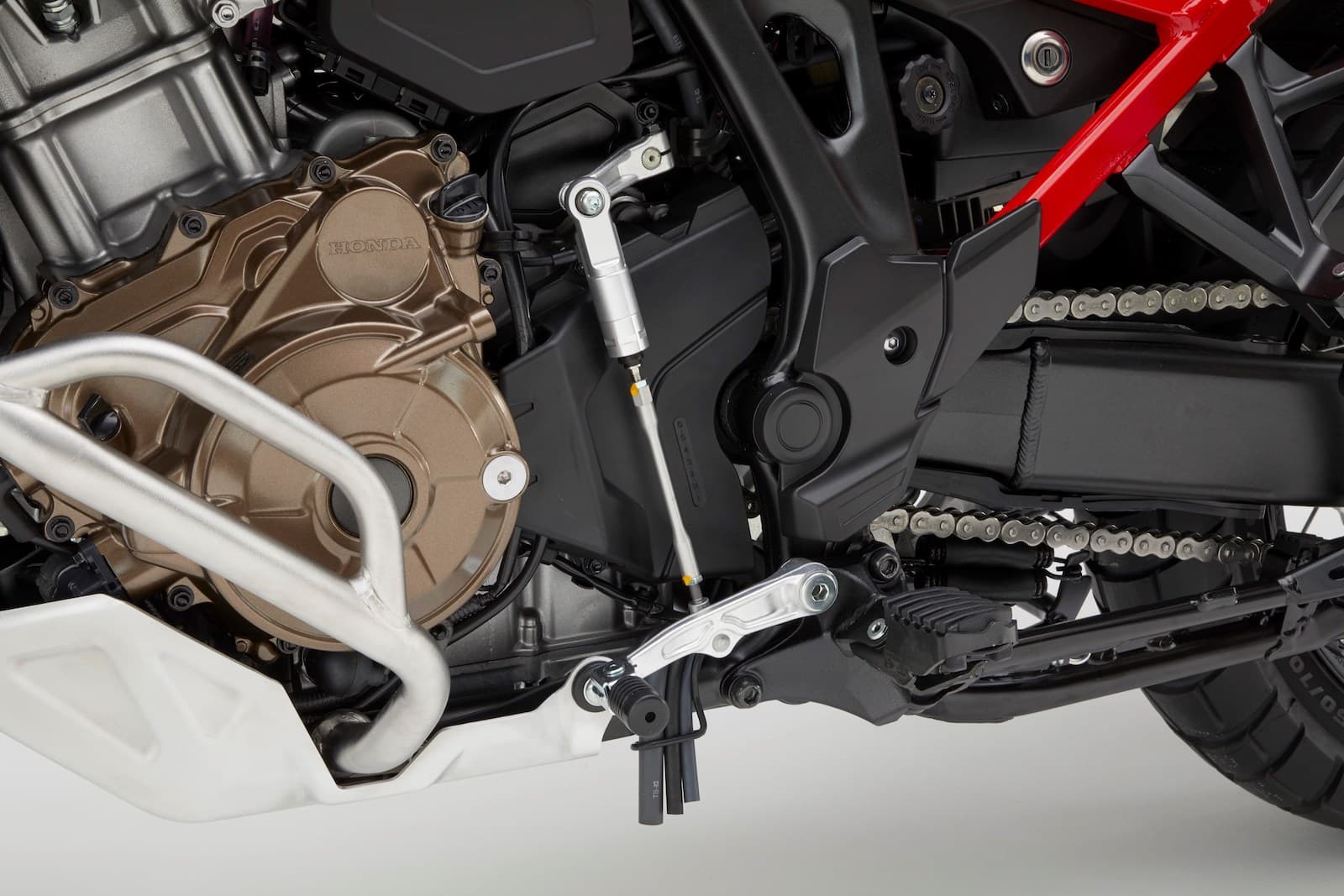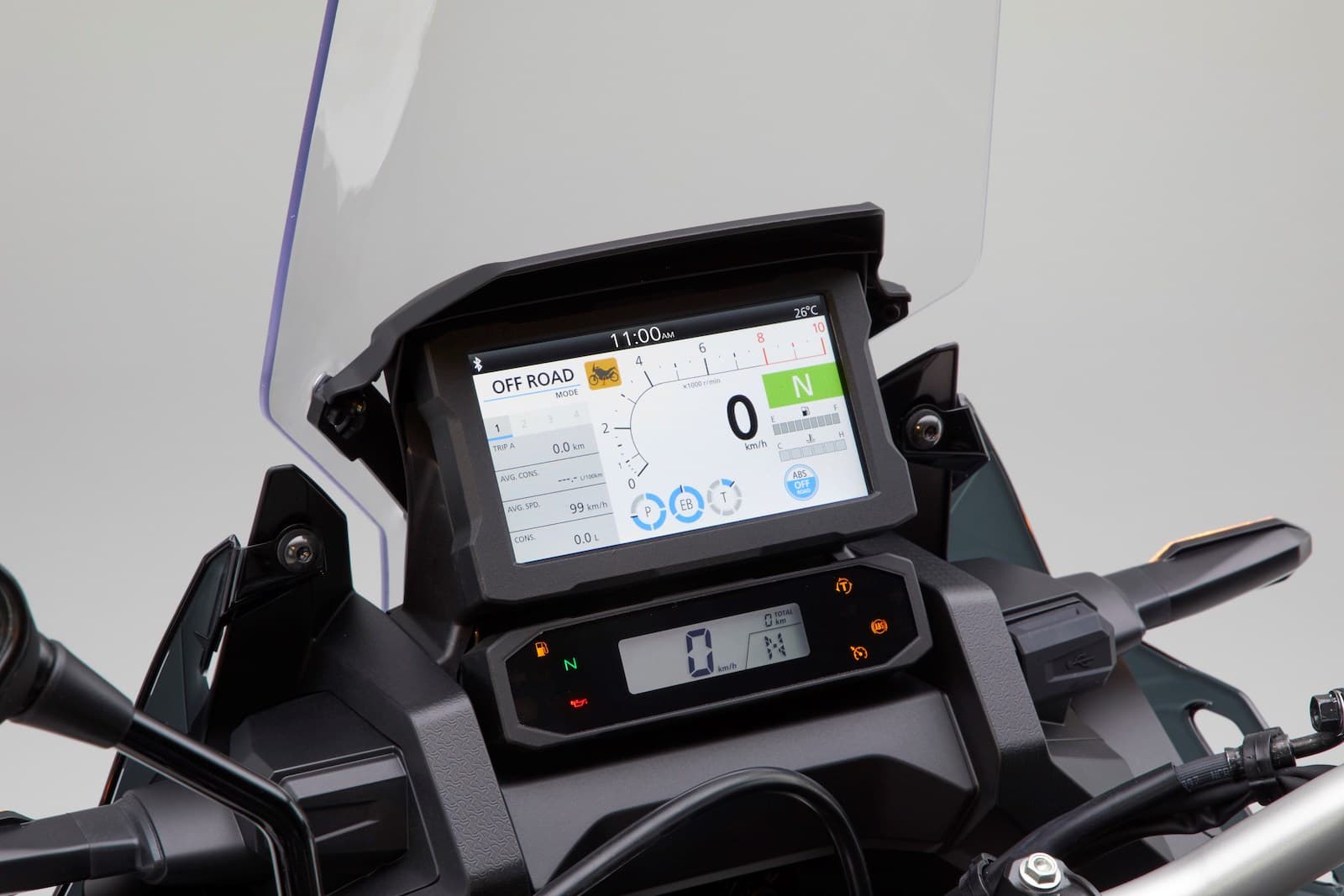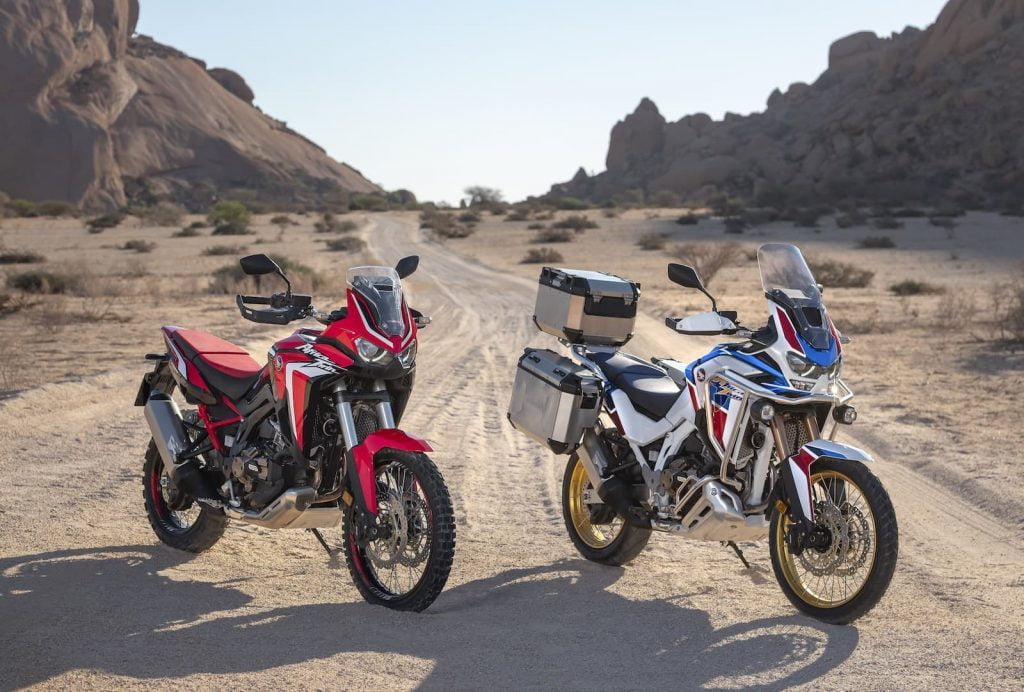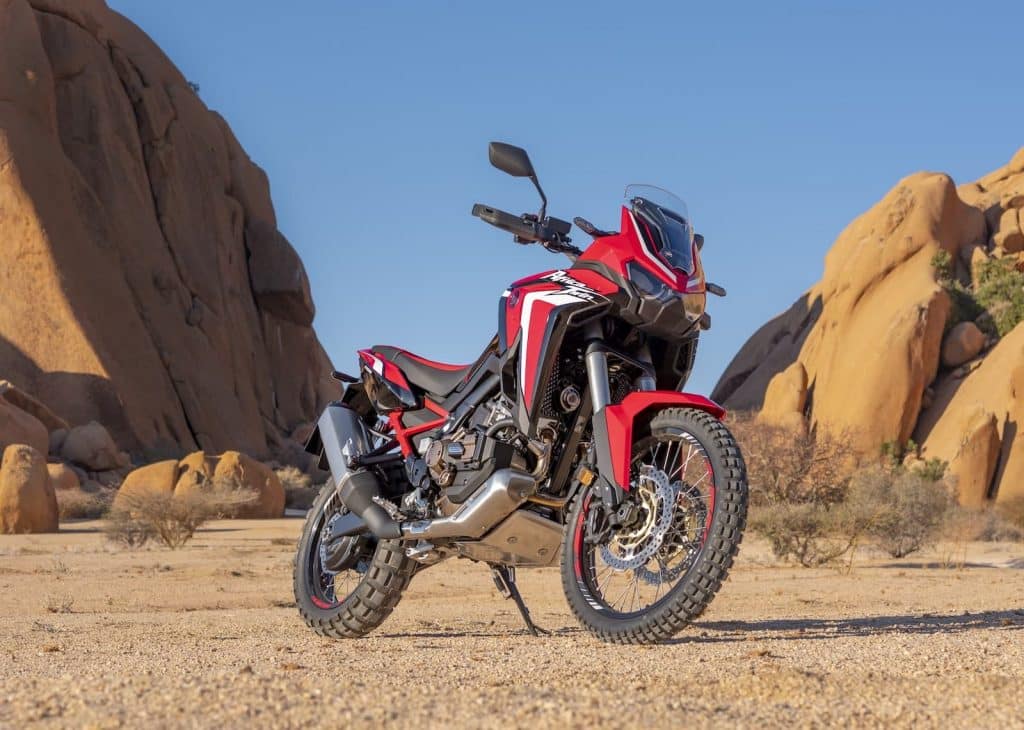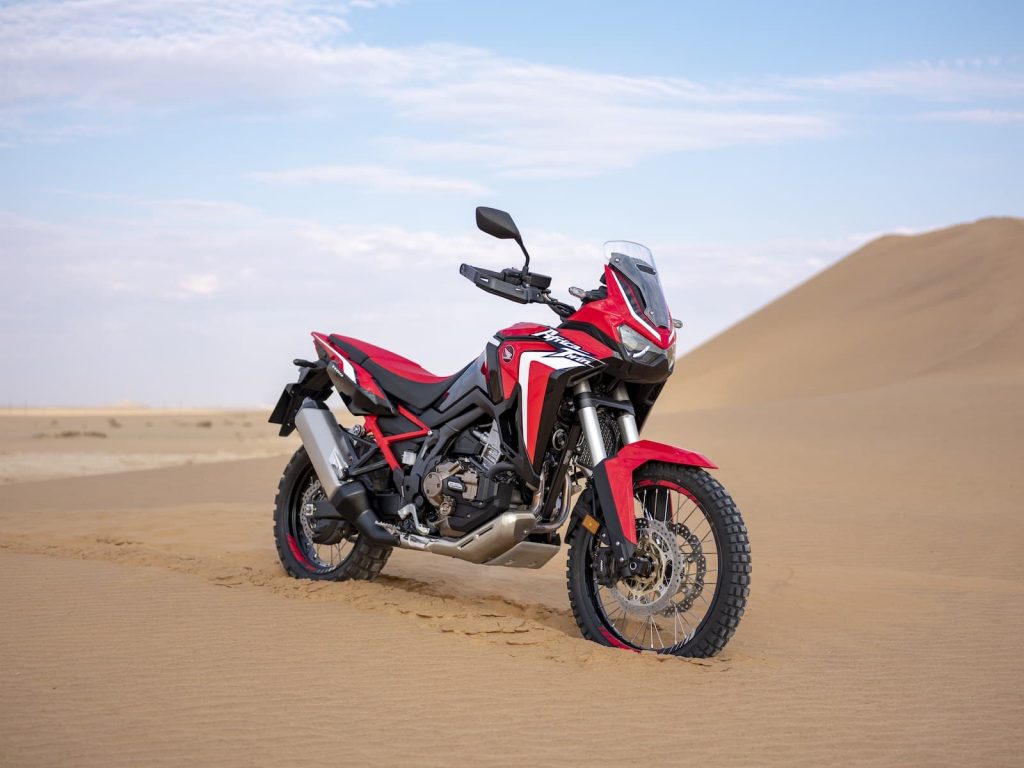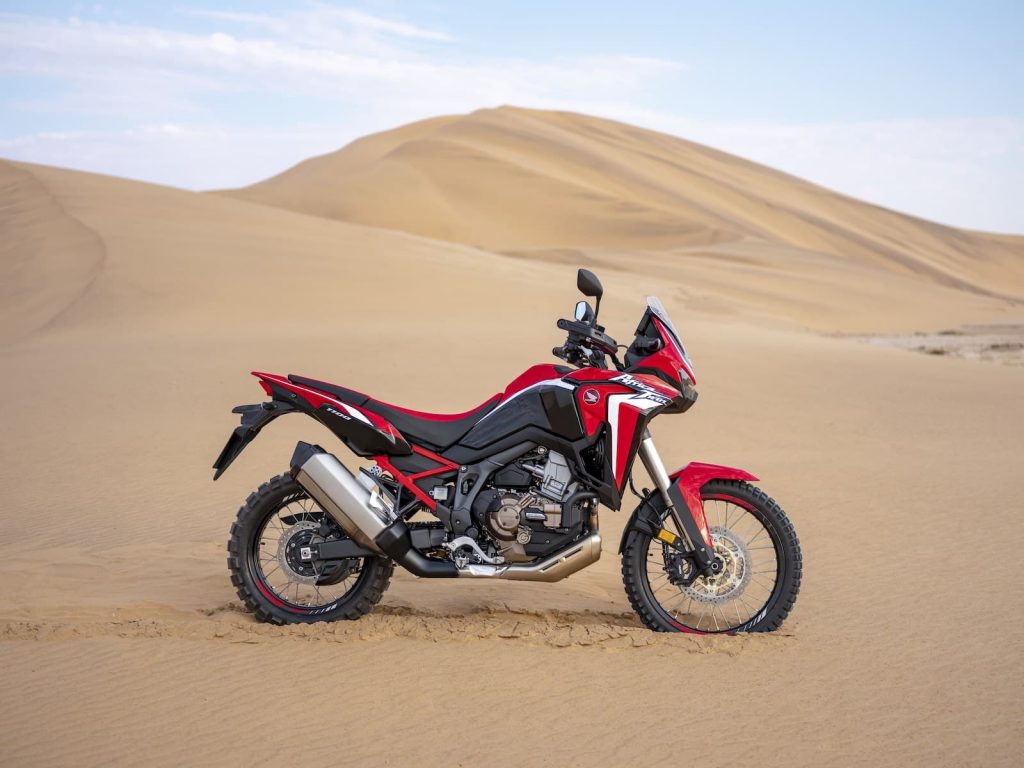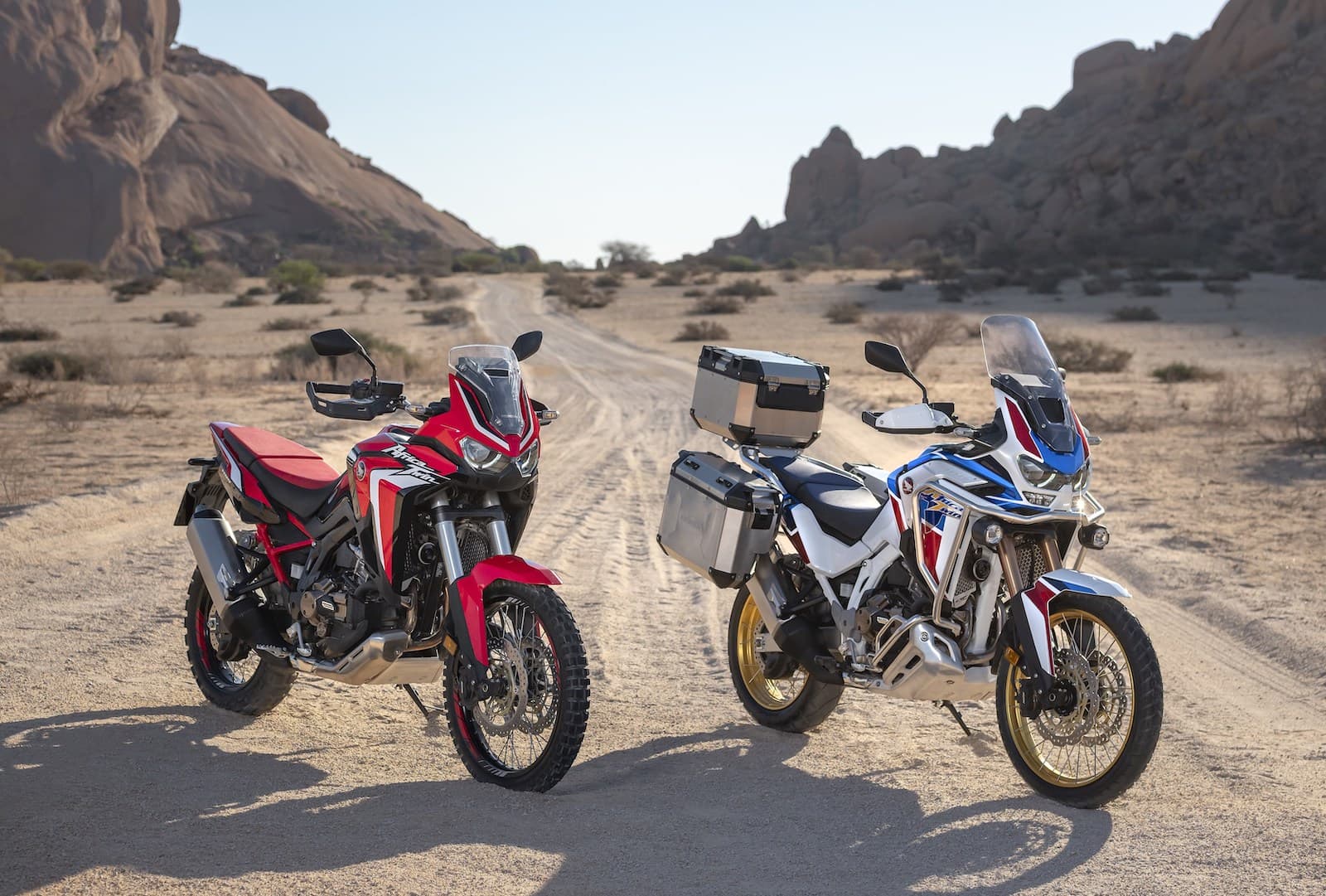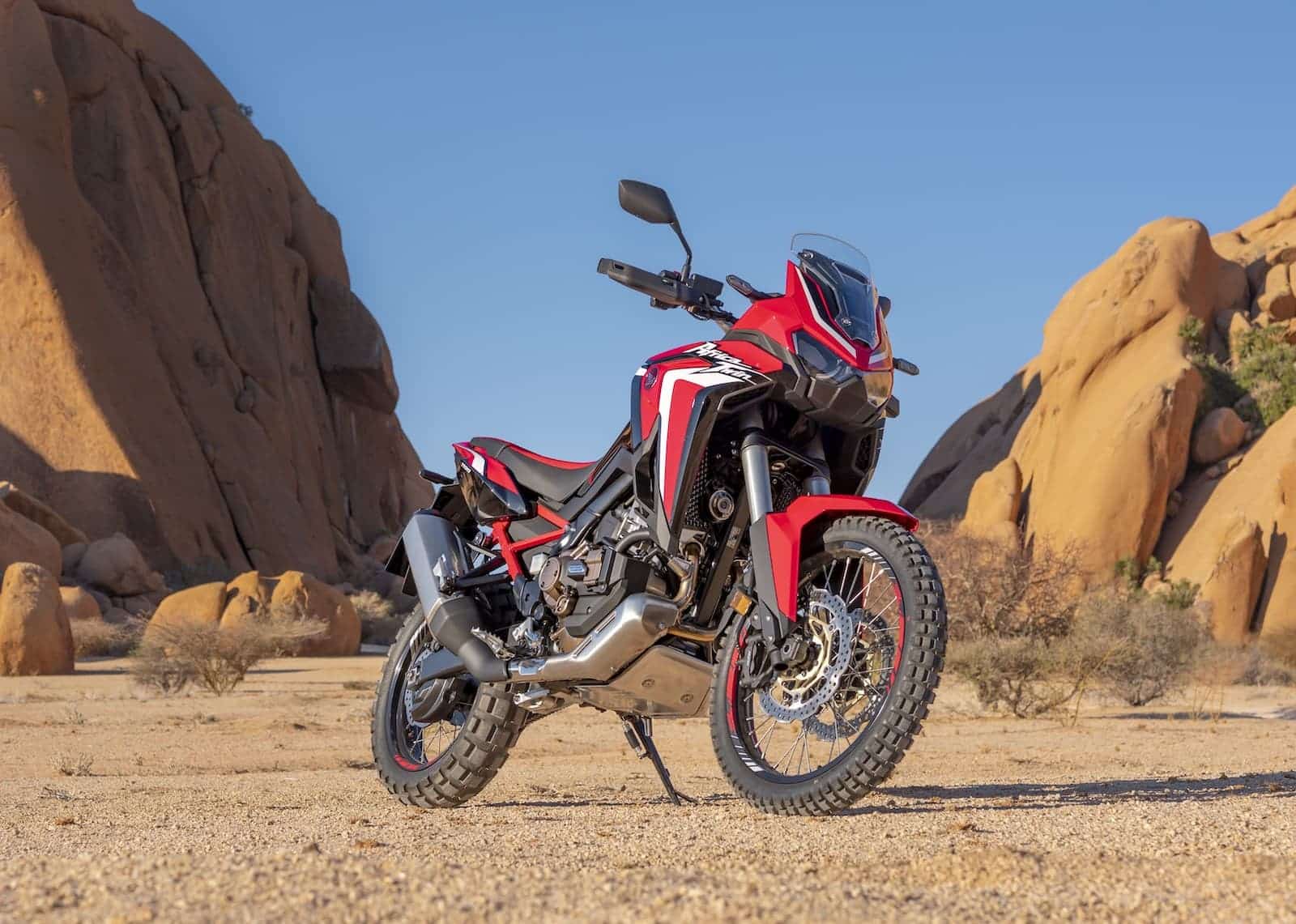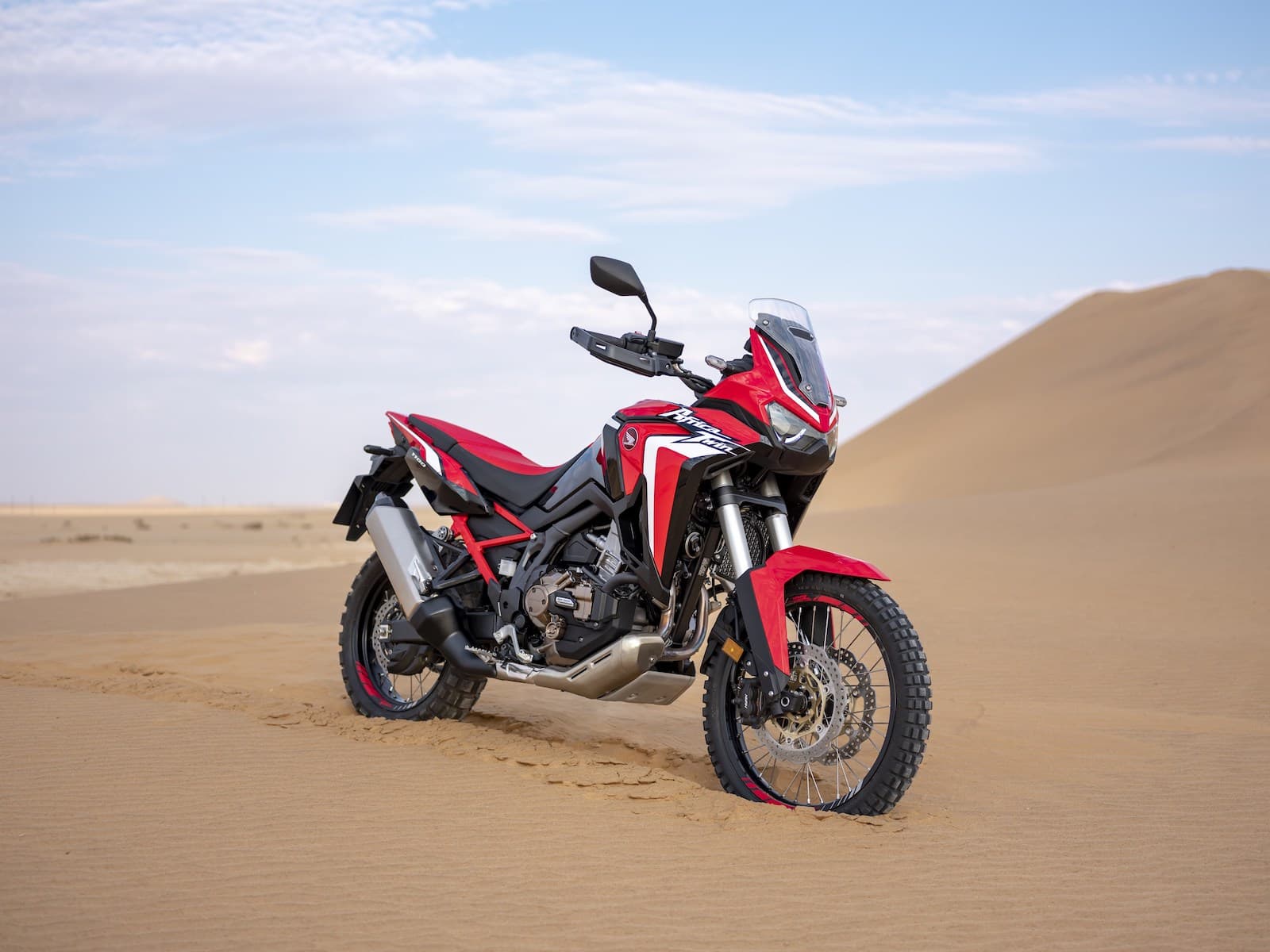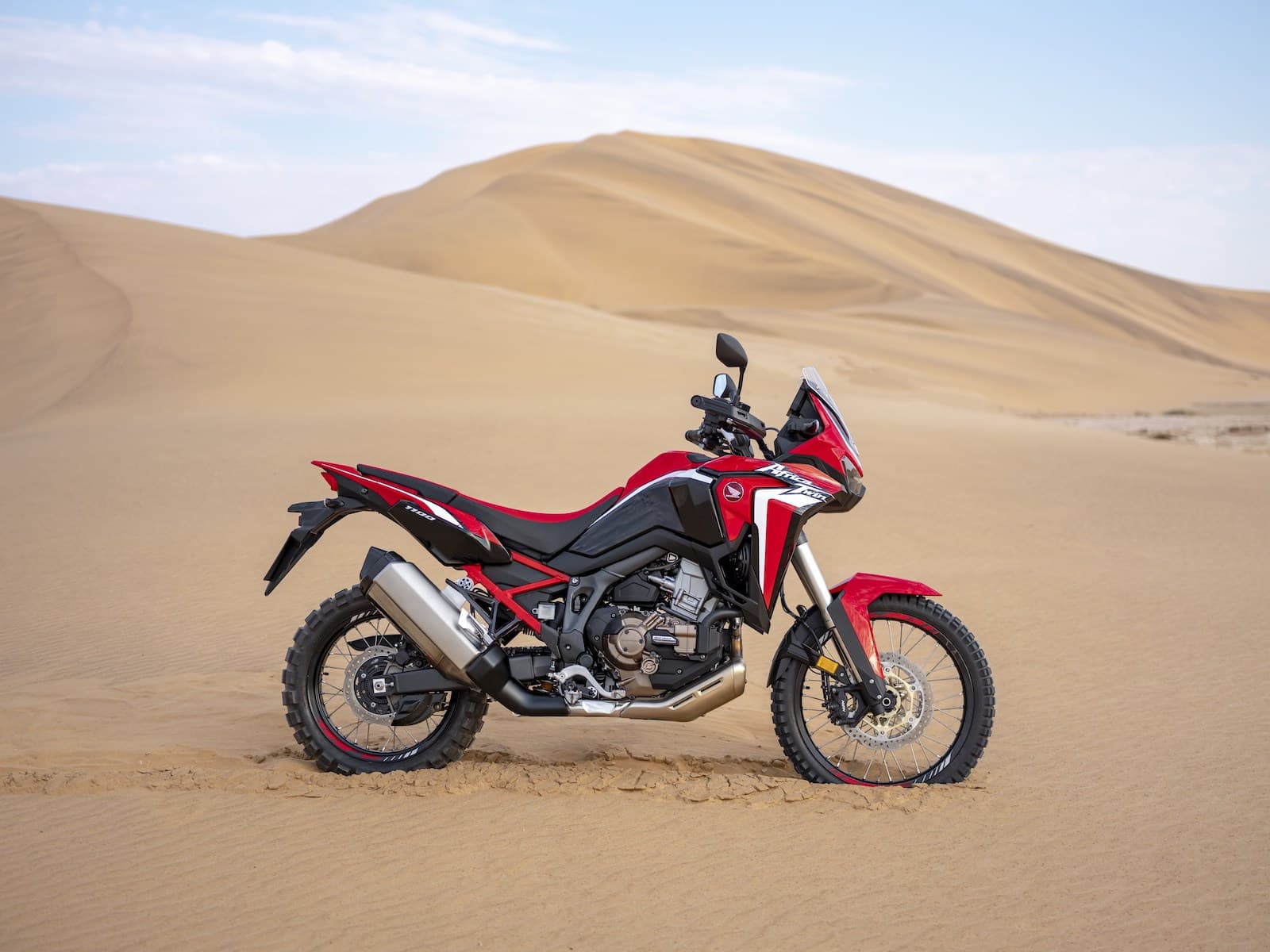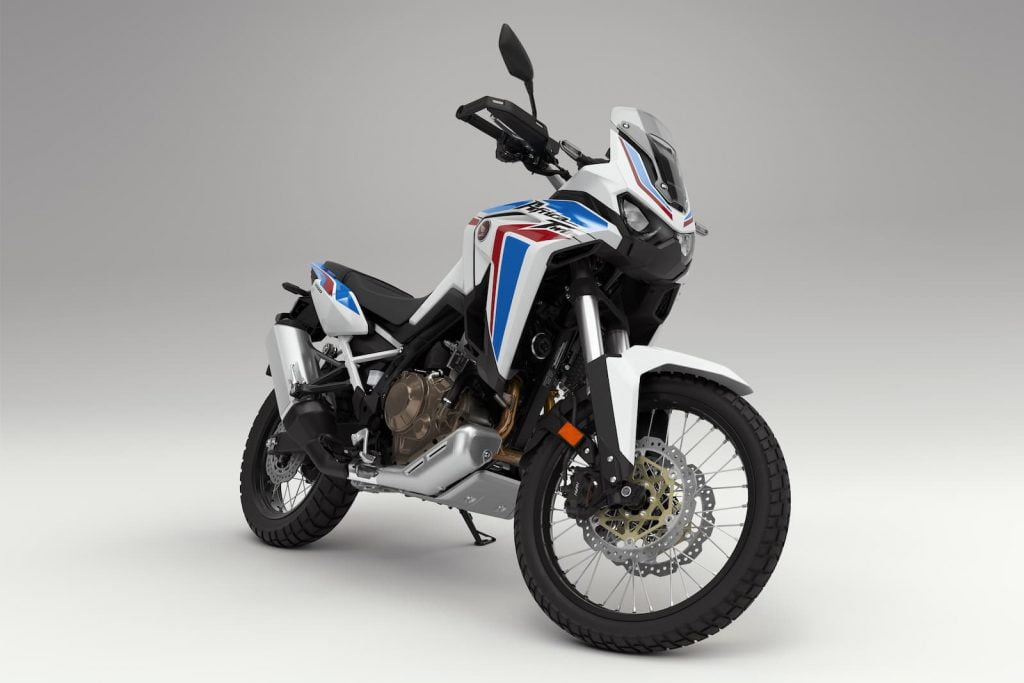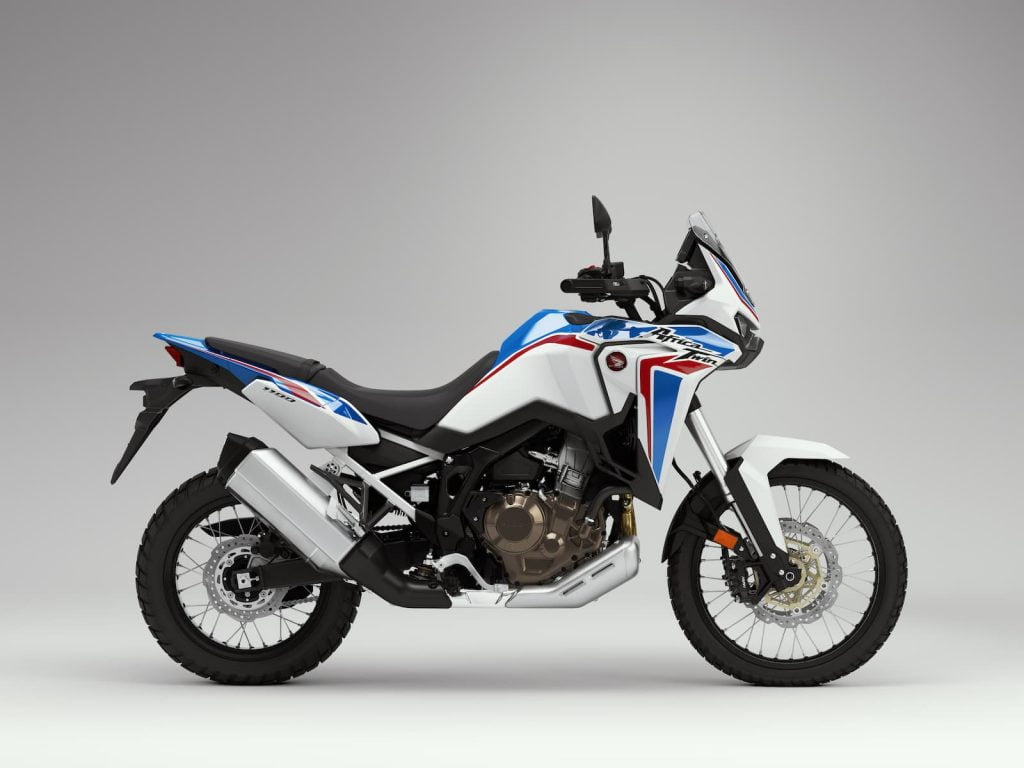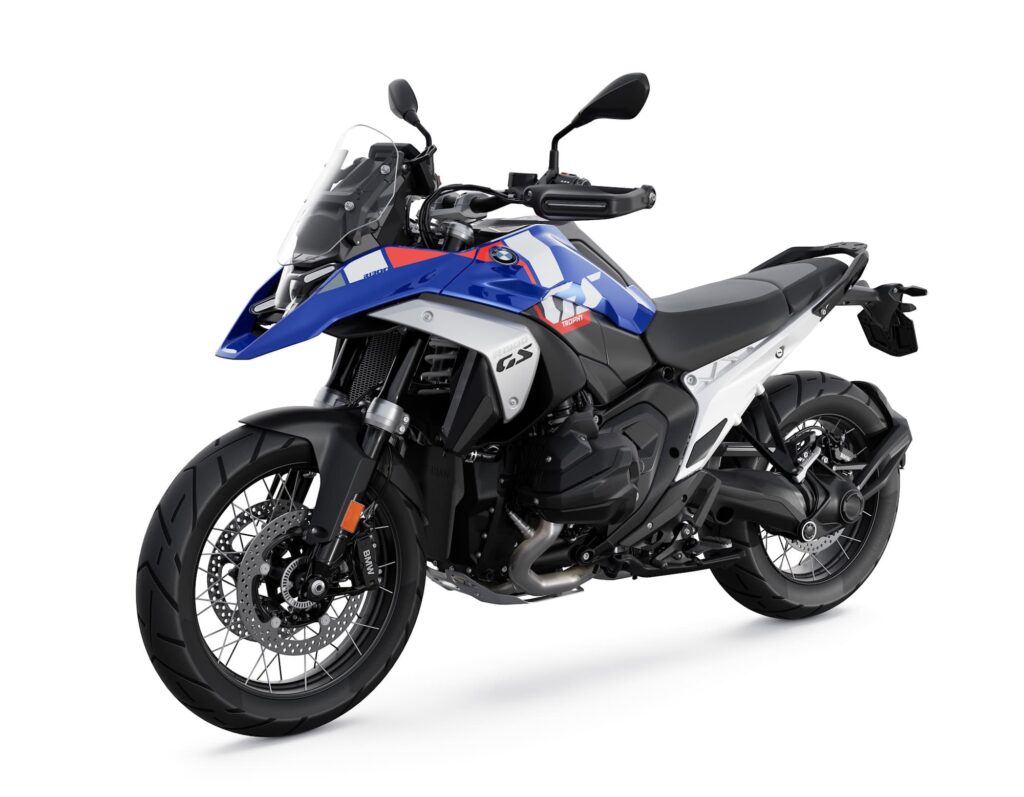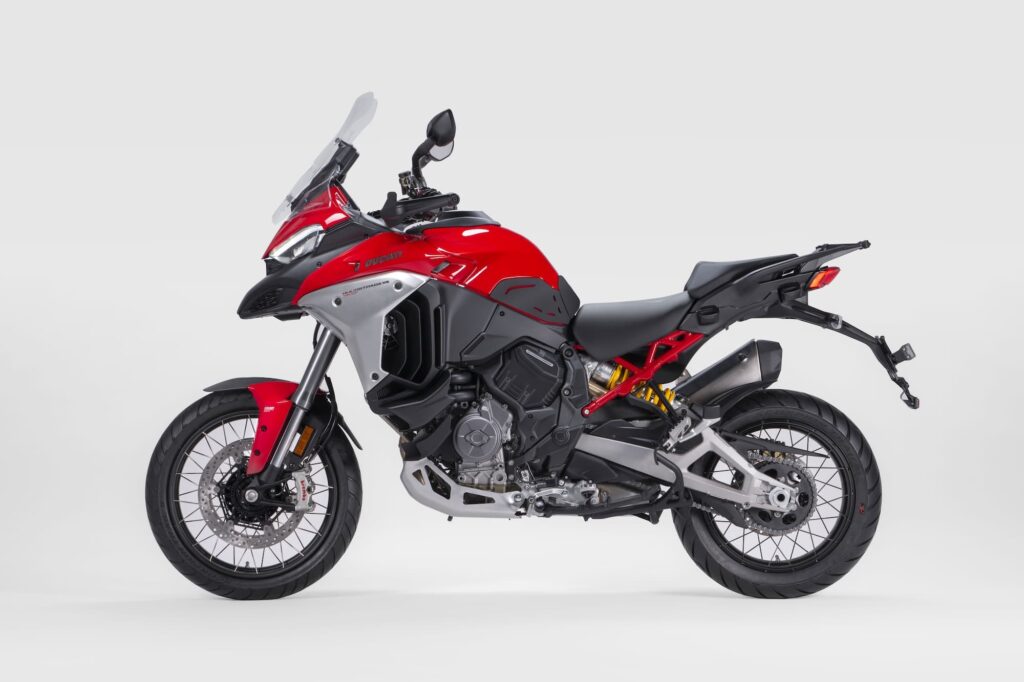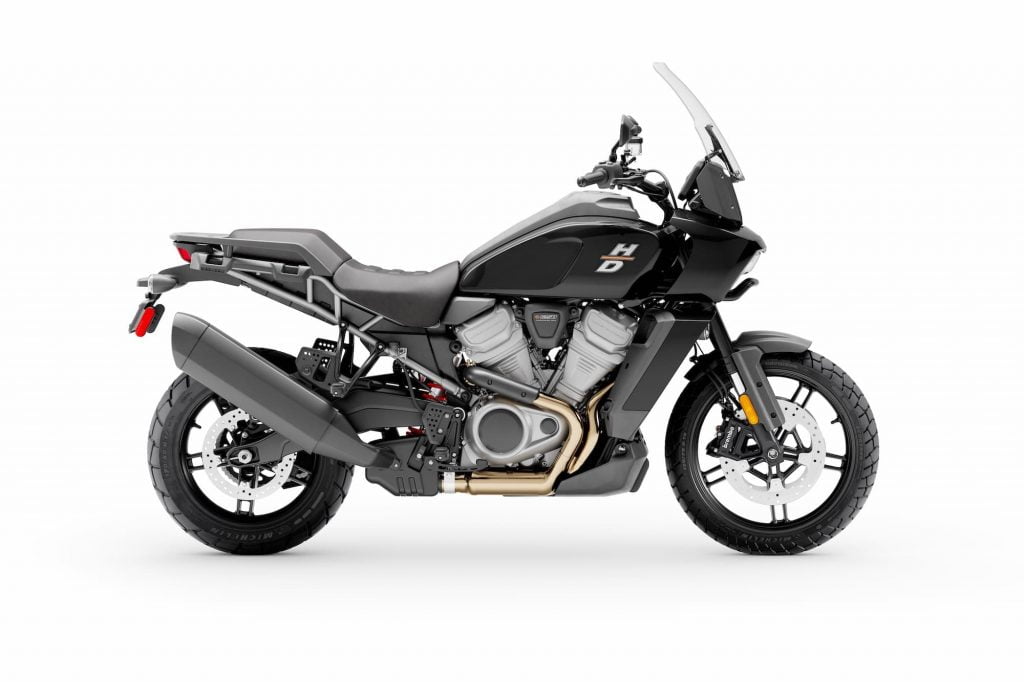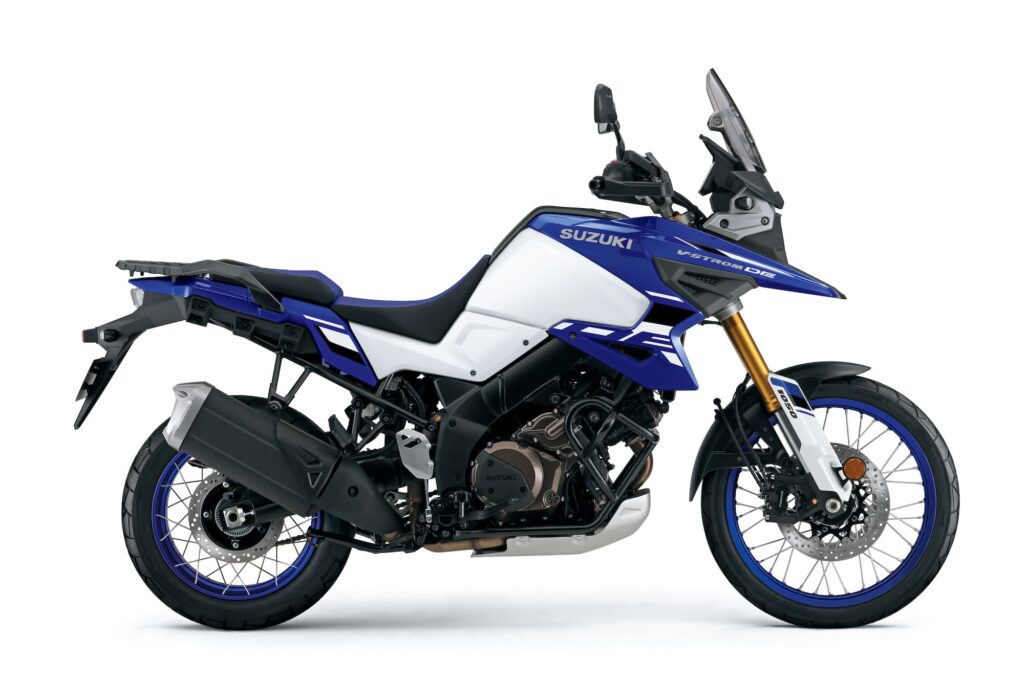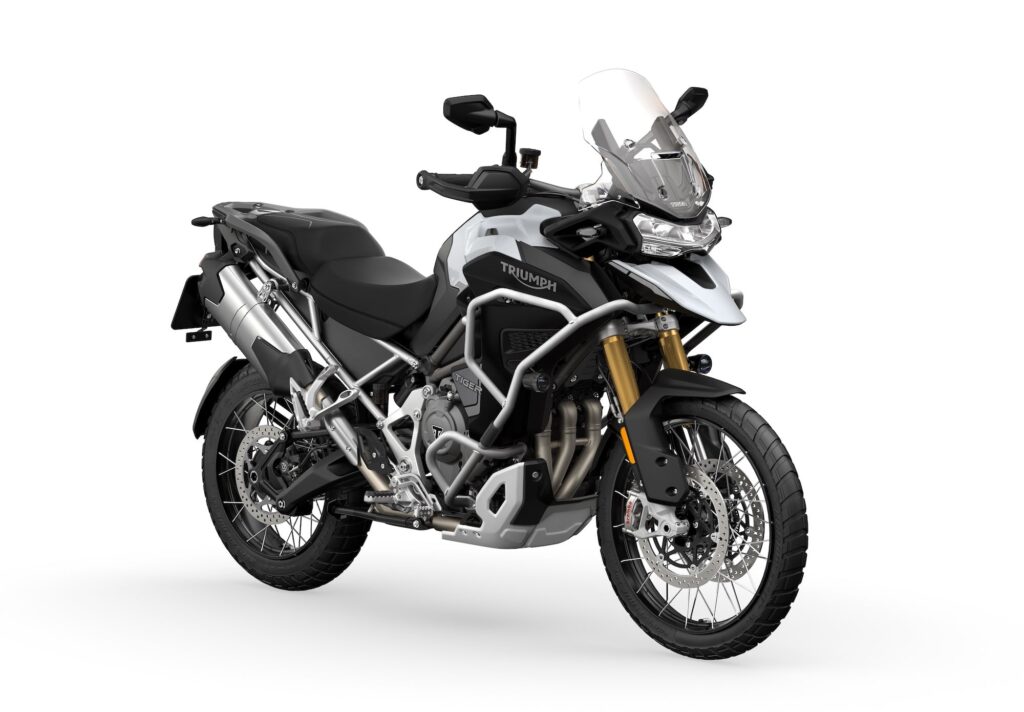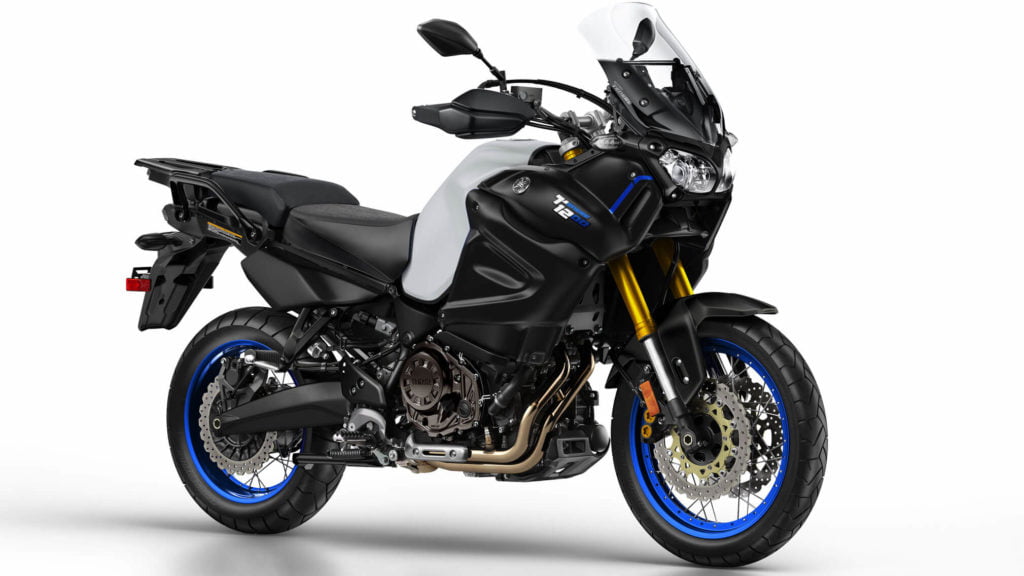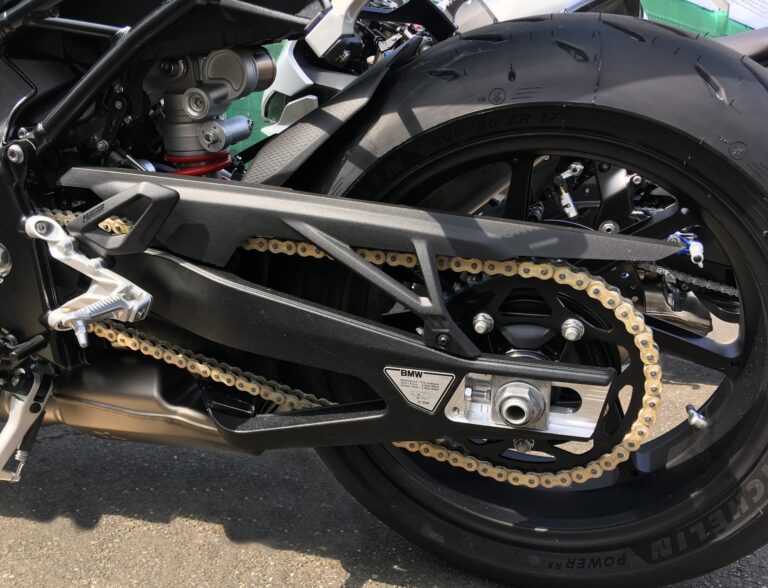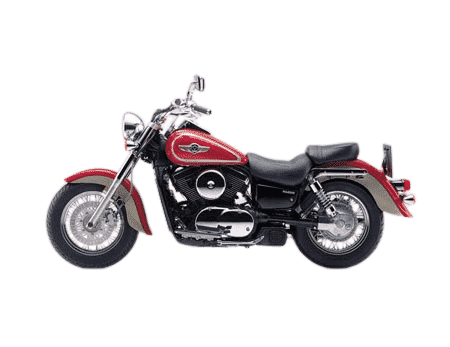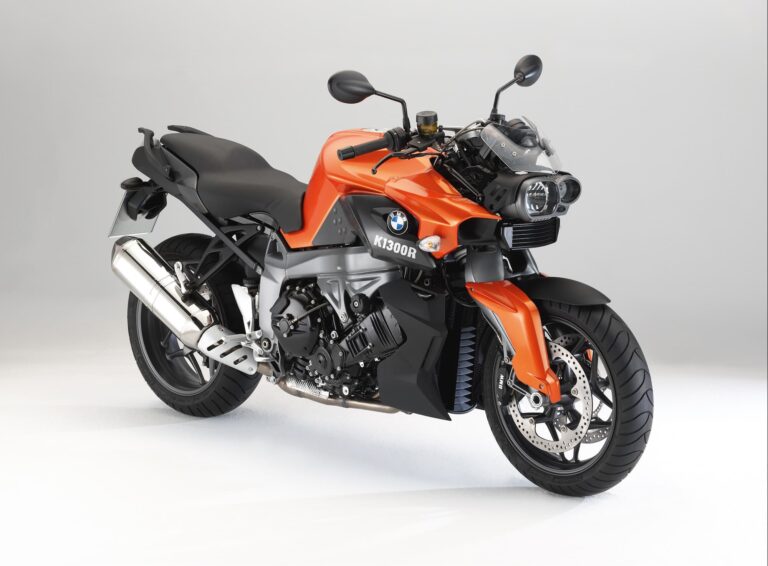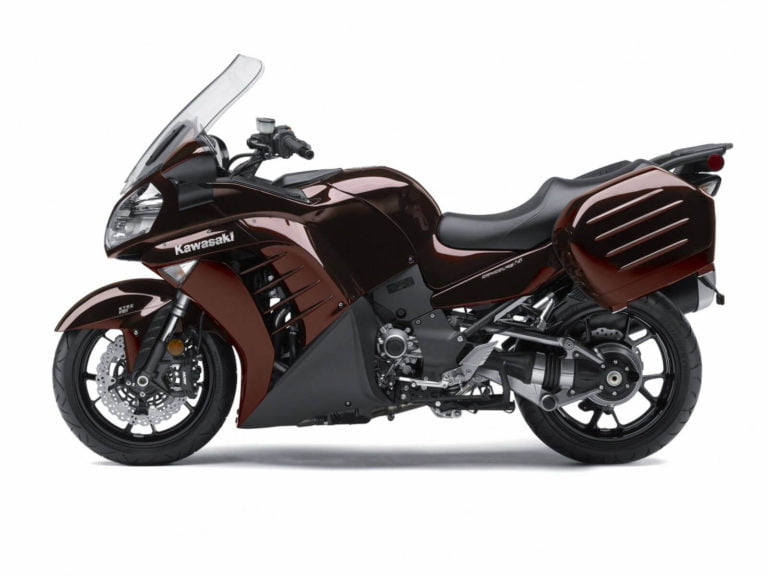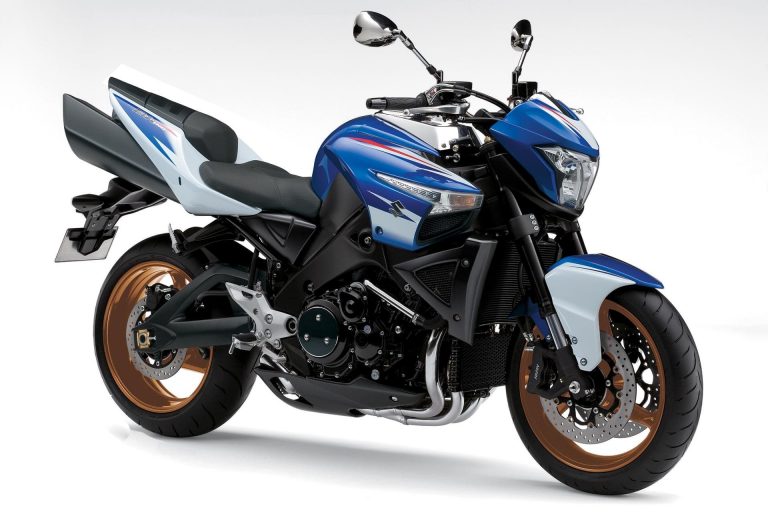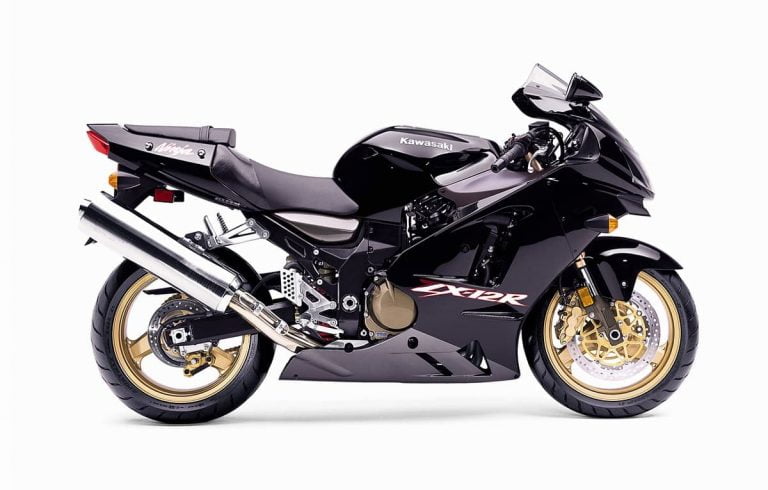Honda Africa Twin CRF1100L (2020+) Maintenance Schedule and Service Intervals
This is the maintenance schedule and associated service intervals for the Honda Africa Twin CRF1100L, released in 2020, replacing the original and already iconic 2016-2019 Africa Twin CRF1000L.
The maintenance is the same between the standard Africa Twin, the DCT, the Adventure Sports, and the Adventure Sports DCT models. The maintenance schedule also shares a lot with the 2021+ Honda Rebel 1100, with which the CRF1100L shares an engine (albeit detuned for the Rebel).
The original Honda Africa Twin CRF1000L really carved itself a niche in the adventure tourer market scene in 2016 when it was launched. The CRF1100L expanded on this, adding more midrange, a more fun motor (and the original was already fun!), and a ton of rider aids like cornering ABS and cruise control.
The Africa Twin is a modern classic — a true alternative to the BMW R 1200 GS, an on-road and off-road bike that you can use to ride around the world.
This post was originally published May 29, 2021, but has since been significantly revised.
This site has links for things like oil and spark plugs from which we earn a commission (which unfortunately nobody can save, not even us). If you appreciate this work, then please use those links. Thanks!
Honda Africa Twin CRF1000L Service Intervals
The Honda CRF1000L Africa Twin has 4000 mile / 6400 km service intervals, but you only need to change the oil every 8000 mi / 12800 km per the maintenance schedule.
The major valve service interval is every 16000 miles / 25600 km, and the spark plugs are only due to be replaced at a very wide 32000 mile / 51200 km interval.
The Africa Twin has a chain drive (unusually for a large-capacity adventure tourer) so make sure you keep it lubed and clean, especially after off-road riding or riding in the rain.
Finally, keep the fluids (coolant and brake fluid) fresh.
What you need to service the Honda Africa Twin CRF1100L
When servicing the Africa Twin, apart from standard motorcycle maintenance tools, you’ll need the following consumables:
| Part | Honda Africa Twin CRF1100L spec |
|---|---|
| Oil | Honda recommends SAE 10W-30, JASO T 903 standard MA with an API classification of SG or higher, like Pro Honda GN4 10W-30. Use a torque wrench to tighten the bolt to 30 Nm (22 lb-ft). |
| Clutch oil filter | For DCT models, you have to regularly change the clutch oil filter. Part number is 15412-MGS-D21, and you can also use Hiflofiltro part number HF117. |
| Oil filter | Honda’s standard part number for the oil filter is 15410-MFJ-D01, or use Hiflofiltro HF204RC for an affordable, high-quality drop-in replacement oil filter.. Use a torque wrench to tighten it to 26 Nm (19 lb-ft). |
| Chain maintenance | Maintain your chain with a Motul chain care kit or Motul chain paste, both of which have many glowing reviews. Honda recommends their own brand of lube. |
| Air filter | The OEM air filter part is 17210-MKS-E00. |
| Spark plugs | Use NGK spark plug part SILMAR8A9S. Use a gapping tool to set the gap to 0.8-0.9mm. You need four. |
| Brake fluid | You can use any DOT 4 oil, but Honda recommends Honda DOT 4. |
| Brake pads (front) | OEM front brake pads are part number 06455-MKK-D01. Alternative EBC double-hardened front brake pads have part number FA679HH. |
| Brake pads (rear) | OEM rear brake pads are part number 06435-MEJ-026. Alternative EBC double-hardened rear brake pads have part number FA174HH. |
| Coolant | Use Honda Long-life Coolant, which is based on ethylene glycol (50-50 premix). |
| Grease | Use lithium soap-based grease for external pivot points and bearings. |
Honda Africa Twin CRF1100L Maintenance Schedule
Below is the maintenance schedule for the Honda Africa Twin CRF1100L.
The maintenance schedule covers DCT and non-DCT — see the notes where relevant. The main things that are different are treatment of the clutch and of the brake lock.
We’ve separated out a “standard inspection checklist” of common items to check, like the condition of the suspension components, tires, and general lubrication level.
Notes:
- At higher odometer readings, repeat at the frequency interval established here.
- Where a distance and time-based interval are both specified, follow the earlier of the two.
| mi x 1000 | 0.6 | 4 | 8 | 12 | 16 | 20 | 24 | |
|---|---|---|---|---|---|---|---|---|
| km x 1000 | 1 | 6.4 | 12.8 | 19.2 | 25.6 | 32 | 38.4 | Every |
| Standard inspection checklist (see below) — Perform | ✓ | ✓ | ✓ | ✓ | ||||
| Engine Oil — Replace (Pro Honda GN4 10W-30) | ✓ | ✓ | ✓ | ✓ | 1 year | |||
| Engine Oil Filter — Replace (HF204RC) Torque: 26 Nm / 19 lb-ft | ✓ | ✓ | ||||||
| Air Cleaner — Replace (17210-MKS-E00) | ✓ | ✓ | More often when riding in wet / dusty areas | |||||
| Spark plugs — Inspect | ✓ | |||||||
| Spark plugs — Replace (NGK SILMAR8A9S) | 32000 mi / 51200 km | |||||||
| Valve Clearances — Inspect / Adjust | ✓ | |||||||
| Clutch Oil Filter (DCT) — Replace Torque: 12 Nm / 9 lb-ft | ✓ | ✓ | ||||||
| Radiator Coolant — Replace (Honda Long-life Coolant) | 3 Years | |||||||
| Brake Fluid — Inspect (Honda DOT 4) | ✓ | ✓ | ✓ | ✓ | ✓ | Replace every 2 years | ||
| Brake pads — Inspect for wear | ✓ | ✓ | ✓ | ✓ | ✓ | ✓ | ||
| Brake lock operation (DCT model) — Inspect | ✓ | ✓ | ✓ | ✓ | ✓ | ✓ | ||
| Drive Chain — Inspect / Lubricate See below for more notes on chain maintenance | 600 mi (1000 km) (More often when riding off-road) | |||||||
| Clutch system (non DCT) — Inspect correct function, no leaks Free play: 10-20mm (3/8 – 13/16 in) | ✓ | ✓ | ✓ | ✓ | ✓ | ✓ | ||
| Drive chain slider — Inspect for wear (see to wear limit line) | ✓ | ✓ | ✓ | ✓ | ✓ | ✓ | More often when riding off-road | |
| Wheels/Tires — Check condition, tread, and for spoke tightness | ✓ | ✓ | ✓ | ✓ | ✓ | ✓ | More often when riding off-road | |
| Spark Arrester (if fitted) — Check | ✓ | ✓ | ✓ | ✓ | ✓ | ✓ | ||
| Secondary Air Supply System — Check | ✓ | |||||||
| Crankcase Breather — Check / Clean | ✓ | ✓ | ✓ | ✓ | ✓ | ✓ | More often when riding in rain / at full throttle | |
| Evaporative Emission Control — Inspect | ✓ |
CRF1100 Standard service checklist
Do the following checks on your Honda Africa Twin 1100 as part of every scheduled inspection (as above).
| Honda Africa Twin 1100 Inspection Checklist |
|---|
| Fuel Lines — Check condition, correct routing, and for no cracks |
| Throttle operation and free play – Lubricate with Protect all cable life Target free play: 2-4 mm (0.1-0.2 in) |
| Check engine idle speed Target idle speed: 1250 rpm +/- 100 rpm |
| Cooling system — Check for no leaks, and that fans come on |
| Radiator coolant — Inspect level |
| Brake system — Check for proper function |
| Brake light switch — Check lights come on |
| Suspension — Check for smooth operation, no leaks |
| Headlight aim — Check, re-adjust after adjusting suspension |
| Side stand / Centre stand — Check for smooth function, lubrication condition |
| Steering head bearings — Check for smooth operation |
| Nuts, bolts, fasteners — Check for presence. Replace / retighten as needed |
Africa Twin Chain Maintenance
Honda recommends you inspect and lubricate the chain on the Honda Africa Twin CRF1100L every 600 mi / 1000 km, or more often when riding off-road.
There are three aspects to maintaining the chain:
- Cleaning and lubricating the chain (using a product that’s portable and high-quality, e.g., Motul Chain Paste, or SAE 80 / 90 gear oil if that’s not available)
- Checking and adjusting the slack / tension
- Inspecting it for wear, and replacing it if necessary. Inspect the sprockets for wear — if they’re shark-toothed, chipped, or damaged, then replace them and the chain.
You don’t need to measure the chain length on the AT. But if the chain is stretched to the point where it’s in the “red zone” on the indicator at the rear axle, it’s too worn and should be replaced.
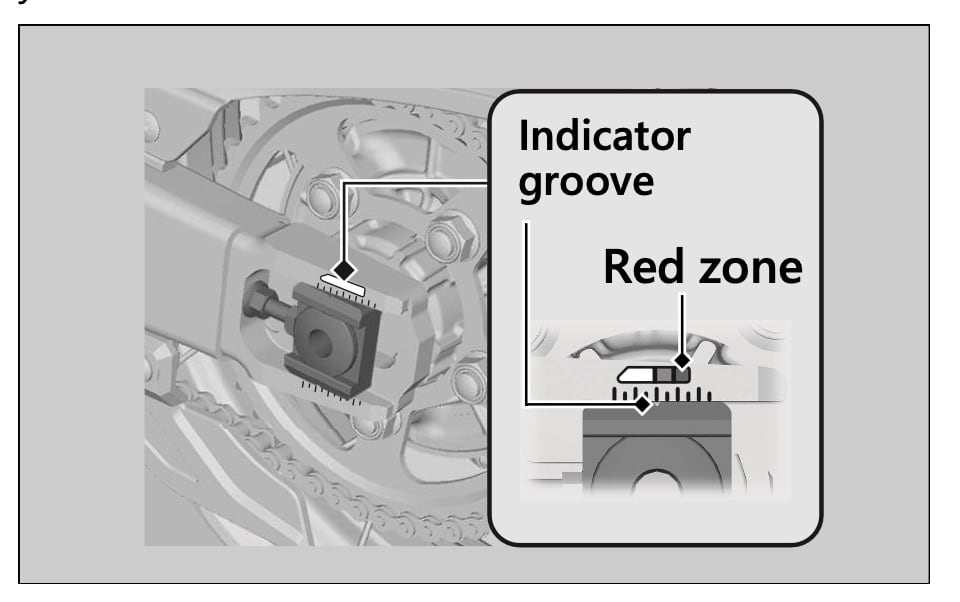
Inspecting the drive chain slack (chain tension)
To check the chain tension on the Honda Africa Twin CRF1100L, follow the following procedure. You just need a ruler
- Put the motorcycle in neutral.
- Put the vehicle on its side stand on a level surface.
- Find the midpoint between the sprockets and move the chain up and down with your finger. Measure the vertical slack distance
Target slack for the CRF1100L Africa Twin: 35-45 mm (1.4-1.8 in).
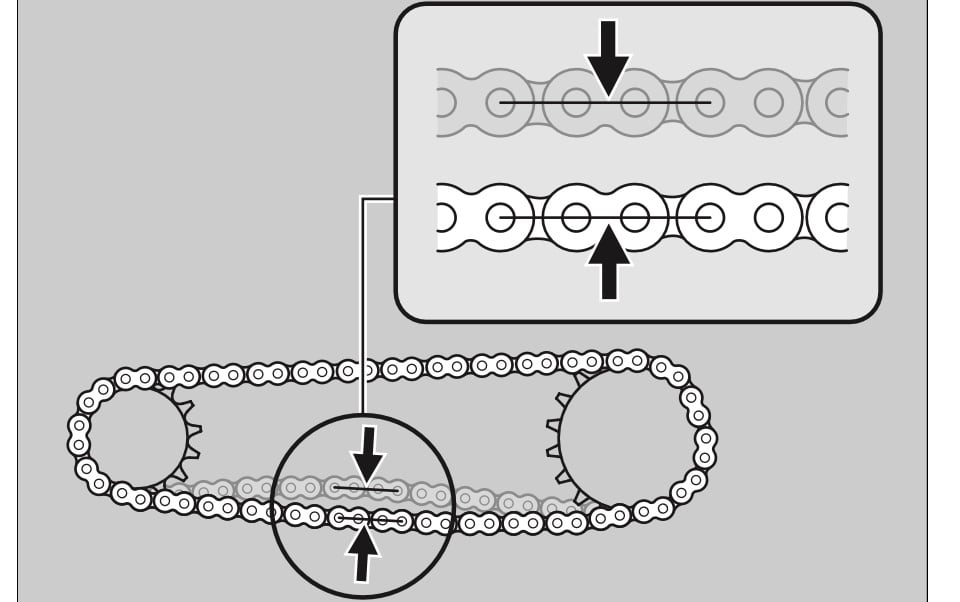
If slack is more than 60mm, don’t ride the motorcycle. You can adjust the chain slack following the procedure below.
Adjusting chain slack
To adjust chain slack on the Honda Africa Twin CRF1100L, you need to
- Loosen the rear axle nut
- Loosen the lock nuts on both adjusting bolts (both sides)
- Turn the adjusting bolts an equal number of turns, checking the slack. Usually you’ll turn counter-clockwise to tighten the chain.
- Push the wheel forward to ensure contact with the adjusting bolts, checking slack
- Check rear alignment, making sure the adjusting plate aligns with the same graduation on both sides of the swingarm
- Tighten the axle nut (100 Nm / 74 lbf-ft)
- Tighten the lock nuts, holding the adjusting nuts in place (27 Nm / 20 lbf-ft)
- Re-check the chain slack to make sure it’s still within spec.
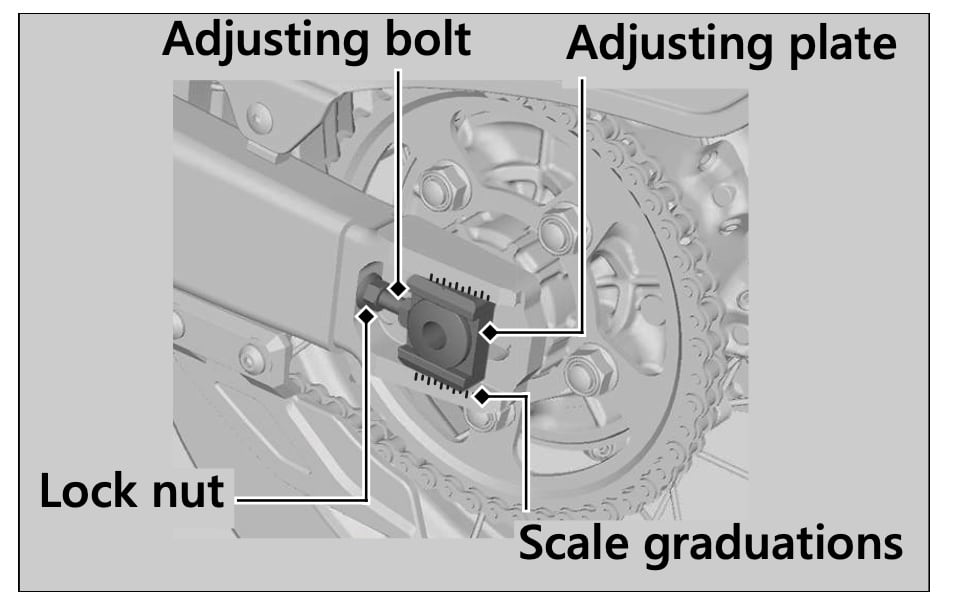
After tightening the chain, check the indicator on the rear axle to see if the chain is in the “red zone” indicating it is too worn.
Tyre size and tyre pressure for the Honda Africa Twin CRF1100L
The Honda Africa Twin CRF1100L has the following tyres and tyre sizes standard:
| Tyre | Size | Tyre pressure |
|---|---|---|
| Front | 90/90-21M/C 54H | 33 psi (225 kPa, 2.25 kgf/cm2) |
| Rear | 150/70R18M/C 70H | 36 psi (250 kPa, 2.50 kgf/cm2) (solo) 41 psi (280 kPa, 2.80 kgf/cm2) (2-up) |
For the CRF1100L, the standard model has tubed tyres, and the Adventure Sports model has tubeless tyres. The tyres the Africa Twin ships with are:
- Tubed: Bridgestone Battlax AdventureCross Tourer AX41TF
- Tubeless: Metzeler Karoo Street
About the Honda Africa Twin CRF1100L
The Africa Twin has gushing praise from just about everyone that owns it, and this has been the case ever since the (re)launch of the Africa Twin in 2016, as the CRF1000L.
In 2020, when Honda released the similar-but-much-improved Honda Africa Twin CRF1100L, it was also received with gushing praise. It has more power, more torque, and less weight — what more could you want?
There was very little that was “wrong” with the earlier model. If you wanted to be difficult, you could say that the earlier AT had tubed tyres where it should have had tubeless ones (at least as an option), deserved better rider aids to compete with big BMWs, and had spokes that gave way to rust a little too easily.
Honda fixed all this with the 2020 Africa Twin CRF1100L. And they fixed something nobody had complained about — the engine.
The Africa Twin CRF1100L (which needs its full name because the engine did increase in displacement) is still an adventure tourer that can do decent dirt time if you ask it of it.
But the engine has been boosted from 998 cc to 1084 cc, with stroke lengthened out from 75.1mm to 81.5mm. The claimed peak power is around 75 kW or 100 hp, with 105 Nm (77 lb-ft) of torque peaking at 6250 rpm.
The higher displacement in the 2020 Honda Africa Twin CRF1100L is partly because of emissions regulations. Restricting the bike means that increasing displacement is the only viable path forwards to keeping the bike competitive compared with the previous model.
The difference is stark. You can see more torque through the ENTIRE rev range. It sounds nicer, too; but of course, as an emissions-compliant motorcycle, you can barely hear it when you’re riding.
The motorcycle’s engine is quite easy to service. It’s a 1084cc single overhead cam 8-valve parallel twin with a 270 degree crank. It puts power down through a 6-speed manual transmission (unless you get the DCT option) and a chain drive. So those are things you have to maintain on any long adventure.
Noteworthy is the DCT option. Like the previous Africa Twin, you can get the CRF1100L with Honda’s DCT “Dual Clutch Transmission”. This lets you either shift using switches at the handlebars or to let the motorcycle shift for you. Many riders scoff at this, but are converted once they take it for a ride.
The 2020-onward AT has a ton of rider aids, including an IMU, cruise control, and a beautiful TFT display. Overall, the cockpit is quite a nice place to be for an extended period.
From 2022, Honda also uses the CRF1100L’s engine in their new sport touring motorcycle, the Honda NT1100.
Alternatives to the Honda CRF1100L Africa Twin — Big Bore Adventure Motorcycles
The Honda Africa Twin CRF1000L shook up the adventure market in 2016, but the CRF1100L is in a much more competitive playing field. Here are the other (latest) big-bore adventure motorcycles with which it competes.
Manual for the Honda Africa Twin CRF1100L

The above maintenance schedule comes directly from the user’s manual for the Honda Africa Twin CRF1100L in 2020. We checked it against other years of the Honda Africa Twin CRF1100L too.
You can download the manual from Honda’s owners’ manual website here.
